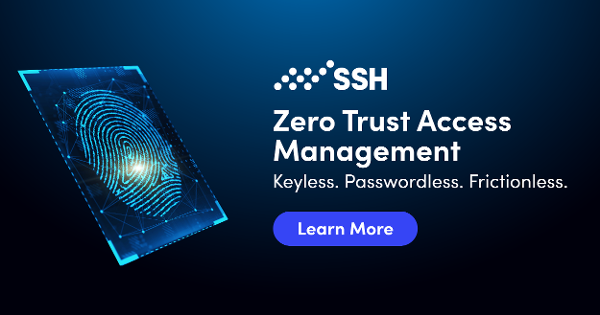Identity Governance and Administration (IGA)
Identity Governance and Administration (IGA) is also known as identity security. It is at the heart of IT security operations, enabling and securing identities for users, applications, and data. IGA provides automated access while at the same time managing potential security and compliance risks.
Contents
What is IGA?
IGA features
How does IGA work?
What is IGA?
IGA represents both a policy framework and a suite of security solutions designed to enhance organizations' ability to effectively reduce identity-related access risks within their operations.
IGA automates the processes involved in creating, managing, and certifying user accounts, roles, and access rights for individuals within an organization. Consequently, companies can streamline tasks such as user provisioning, password management, policy management, access governance, and access reviews.
Simply put, IGA involves utilizing the most intelligent and efficient methods to mitigate identity risks in a business.
As an integral component of Identity and Access Management, IGA provides organizations with heightened visibility into user identities and access privileges. This visibility enables better management of who has access to specific systems and when. Identity governance empowers organizations to achieve more with fewer resources and bolsters their security stance.
IGA features
Identity Governance and Administration (IGA) offers automated functionalities to create and oversee user accounts, roles, and access privileges for individual users within organizational settings. Through IGA, entities can adopt a more secure, strategic, and efficient approach to tasks such as provisioning and de-provisioning, user lifecycle management, compliance and governance, password management, and access certifications.
Identity governance facilitates several advantages for companies, including:
- Enhancing organizational security and diminishing identity-related risks.
- Utilizing role-based access for intelligent and transparent role management.
- Streamlining certification processes to meet the escalating demands of auditors.
- Ensuring adherence to government regulations and industry standards.
- Increasing operational efficiencies to empower the business to achieve more with fewer resources.
 How does IGA work?
How does IGA work?
IGA helps businesses in various areas, reducing costs, maximizing security, and enhancing performance.
Minimize operational expenses
Identity governance and administration automate labor-intensive procedures such as access certifications, access requests, password management, and provisioning, resulting in a substantial reduction in operational costs.
Featuring a user-friendly interface for business users, this approach significantly decreases the time IT staff dedicates to administrative tasks. It empowers users to independently seek access, handle passwords, and review access. Additionally, organizations gain access to dashboards and analytical tools, providing essential information and metrics to reinforce internal controls and mitigate risks.
Mitigate risks and fortify security
The escalating threat of compromised identities, stemming from weak, stolen, or default user credentials, poses a significant challenge for organizations. Centralized visibility establishes a singular authoritative perspective on "who has access to what," enabling authorized users to promptly identify inappropriate access, policy violations, or weak controls that jeopardize organizational security.
Identity governance solutions facilitate the identification of risky employee groups, policy breaches, and improper access privileges, allowing for the remediation of these risk factors.
Enhance compliance and audit performance
Identity governance and administration enable organizations to validate the presence of appropriate controls to meet the security and privacy requirements outlined in regulations like SOX, HIPAA, and GDPR. They establish consistent business processes for password management, access review, request, and approval, all grounded in a unified policy, role, and risk model.
Through role-based access control, companies substantially diminish compliance costs while effectively managing risk and establishing repeatable practices for more uniform, auditable, and easily manageable access certification efforts.
Facilitate efficient business access
Identity governance and administration provide users with timely access to the resources necessary for their roles, fostering productivity and adaptability to changing responsibilities. Users gain the ability to independently request access and manage passwords, alleviating the burden on the help desk and IT operations teams. Automated policy enforcement ensures compliance with service-level requirements without compromising security or compliance.
Secure privileged access to critical and sensitive data with SSH Communications Security
IGA is a comprehensive framework for enhancing a company’s security posture. We at SSH Communications Security focus on protecting access made by a small subset of users with a high-risk profile. These users are typically called privileged users since these superadmins, power users, or software developers to name a few, access targets like credit card databases, critical infrastructures, production servers, and network switches.
Learn more about our Zero Trust Suite that can help you secure critical access and related credentials and overall help your organization secure communications between humans, networks, and systems.
